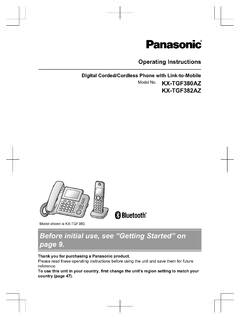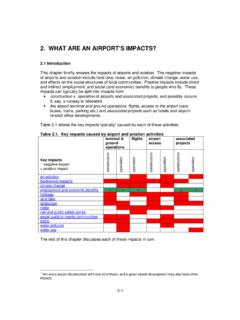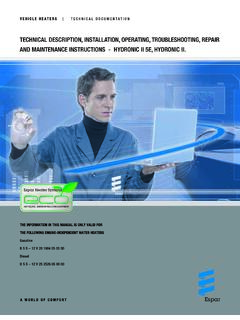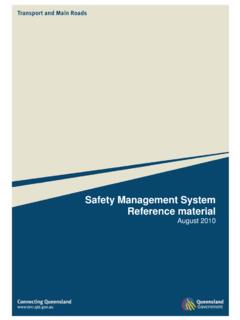Transcription of Storage of flammable liquids in containers HSG51
1 Health and Safety Executive Storage of flammable liquids in containers This guidance is for those responsible for the safe Storage of flammable liquids in containers at the workplace. It applies to Storage of flammable liquids in containers up to 1000 litres capacity. It explains the fire and explosion hazards associated with flammable liquids and will help you determine how to control the risks in your workplace. The guidance is one of three documents dealing with fire and explosion hazards associated with flammable liquids . The other two are: Safe use and handling of flammable liquids HSG140;. Storage of flammable liquids in tanks HSG176. It supplements the advice contained in Dangerous substances and explosive HSG51 (Third edition) atmospheres.
2 Dangerous Substances and Explosive Atmospheres Regulations Published 2015 2002. Approved Code of Practice and guidance, L138. In recognition of the diversity of premises in which flammable liquids are stored and/or used, the guidance now contains discrete topic areas which outline the potential risks and recommended control measures for a number of different types of business. HSE Books Storage of flammable liquids in containers Page 1 of 60. Health and Safety Executive Contents Introduction 4. Dangerous Substances and Explosive Atmospheres Regulations 2002 (DSEAR) 6. General fire safety legislation 6. Risk assessment 6. Hazards 8. Common causes of incidents 8. flammable vapours 8. Safety measures 11. Control measures 12. Design and construction of containers 12.
3 Marking and labelling 13. Preventing dangerous accumulations of flammable vapours 13. Spillage control 13. Control of potential ignition sources and hazardous area classification 14. Adverse conditions 15. Segregation of incompatible substances 16. Security 16. Mitigation measures 17. General safety measures 17. Emergency procedures 20. Planning 20. Leaks and spillages 21. Environment 21. Recovery 22. General fire precautions 23. Outdoor Storage areas 23. Information and training 25. Signage 25. Typical Storage facilities and arrangements 27. Outdoor Storage 27. Storage in dedicated (separate) buildings 32. Storage in storerooms (within other buildings) 35. Storage in process areas, workrooms, laboratories and similar working areas 39.
4 Storage of finished products 42. Temporary Storage 43. Storage and display at retail premises 43. Storage in a small engineering factory or motor vehicle repair shop 45. Storage of higher flashpoint flammable liquids 47. Storage locations 47. Storage of flammable liquids in containers Page 2 of 60. Health and Safety Executive Design of stores 47. Operations 48. Retail premises 48. Appendix 1 Physical barriers of fire-resisting construction 49. Appendix 2 Mechanical exhaust ventilation (MEV) 50. Appendix 3 Other relevant health and safety legislation 51. Management of Health and Safety at Work Regulations 1999 (the Management Regulations) 51. Control of Substances Hazardous to Health Regulations 2002 (COSHH) 51. CLP and CHIP 51. Provision and Use of Work equipment Regulations 1998 (PUWER) 52.
5 equipment and Protective Systems Intended for Use in Potentially Explosive Atmospheres Regulations 1996 (EPS) 52. Planning (Hazardous Substance) Regulations 1992 52. Dangerous Substances (Notification and Marking of Sites) Regulations 1990. (NAMOS) 52. Control of Major Accident Hazards Regulations 1999 (COMAH) 52. Consulting employees and safety representatives 53. Electricity at Work Regulations 1989 53. Carriage of Dangerous Goods and Use of Transportable Pressure equipment Regulations 2009 (CDG) 53. Health and Safety (Safety Signs and Signals) Regulations 1996 53. Health and Safety Enforcing Authority Regulations 1998 53. Food and Environment Protection Act 1985 (FEPA) 53. Petroleum (Consolidation) Regulations 2014 54. References 55.
6 Glossary 57. Further information 60. Storage of flammable liquids in containers Page 3 of 60. Health and Safety Executive Introduction 1 This guidance is for those responsible for the safe Storage of flammable liquids in containers at the workplace. It provides information on the fire and explosion hazards associated with flammable liquids and will help you to control the risks. It details practical measures to protect people at work and others who may be affected by the work activity of storing flammable liquids in containers up to 1000. litres capacity. 2 The guidance is one of three documents published by HSE dealing with the fire and explosion hazards associated with flammable liquids . The other two documents are: Safe use and handling of flammable liquids HSG140;1.
7 Storage of flammable liquids in tanks 3 This document complements Dangerous substances and explosive atmospheres. Dangerous Substances and Explosive Atmospheres Regulations 2002. Approved Code of Practice and guidance You will be referred to L138 for additional information. 4 The guidance will also provide a useful source of reference for: employees;. employee-elected representatives;. trade union appointed health and safety representatives; and all other people who have a role in ensuring and assessing the adequacy of health and safety in the workplace. 5 The guidance may also be useful to professional bodies, trade organisations and associations; and other safety specialists to inform the development of more specific guidance for their own members.
8 6 The objectives of this guidance are to: increase awareness of the potential fire and explosion hazards associated with the Storage of flammable liquids ;. give guidance on appropriate standards for plant and equipment ;. advise on the need for appropriate fire precautions, maintenance, training and good housekeeping where flammable liquids are stored. 7 In this guidance, flammable liquid ' means a liquid with a flashpoint of 60 C. or below. This reflects the EU Classification, Labelling and Packaging of Substances and Mixtures Regulation (no 1272/2008) (the CLP Regulation), which sets the criterion for substances and mixtures to be classified as flammable to be those with a flashpoint of up to 60 C. See Appendix 3 for more information on CLP.
9 8 This guidance specifically applies to flammable liquids stored above their flashpoint. Primarily this will be flammable liquids categorised under CLP as: Category 1: flashpoint <23 C and initial boiling point 35 C; and Category 2: flashpoint <23 C and initial boiling point >35 C. Storage of flammable liquids in containers Page 4 of 60. Health and Safety Executive 9 However, it also potentially includes: Category 3 flammable liquids (under CLP) flashpoint 23 C and 60 C; and combustible liquids with a flashpoint above 60 C;. where as a consequence of environmental or workplace operational conditions it is reasonably foreseeable they may be stored above their flashpoint. In such circumstance, a similar fire and explosion hazard can exist to that presented by the Storage of Category 1 and 2 flammable liquids .
10 10 For convenience, the term lower flashpoint flammable liquids ' is used in this guidance to describe the flammable liquids defined in paragraphs 8 and 9. 11 For Category 3 flammable liquids that under normal environmental or workplace operational conditions will always be stored at temperatures below their flashpoint and in consequence will not produce a flammable atmosphere, not all the practical measures described in this guidance may be necessary. This guidance discusses those appropriate for these higher flashpoint flammable liquids . 12 This guidance does not apply to flammable liquids which present special hazards requiring specific precautions, eg ethylene oxide, peroxides, and other liquids which carry a risk of rapid decomposition, polymerisation or spontaneous combustion.



















